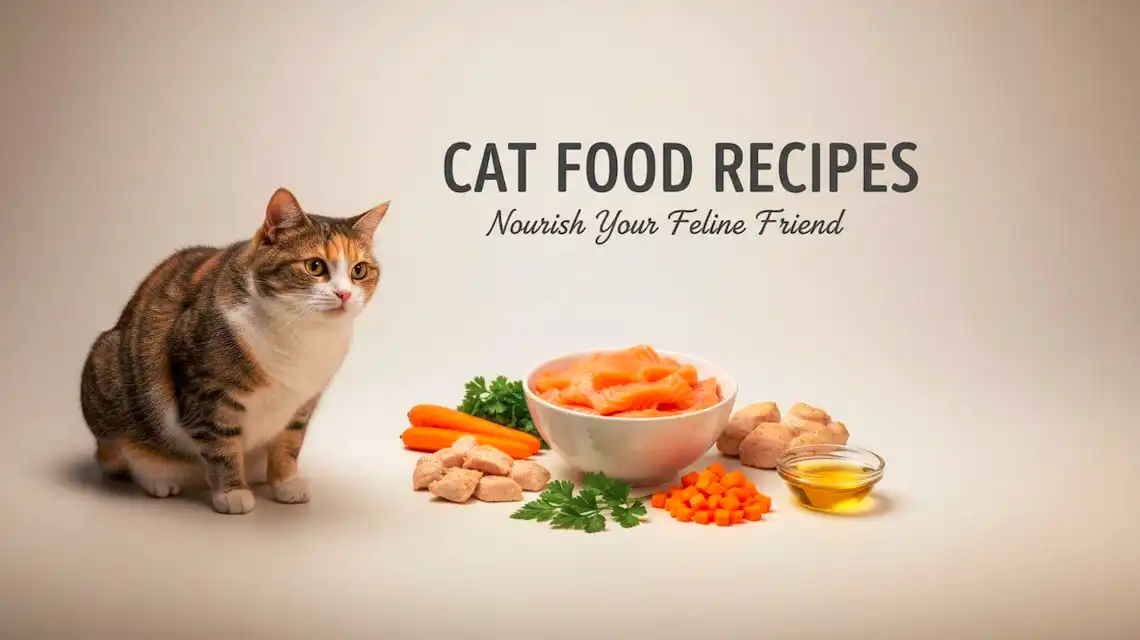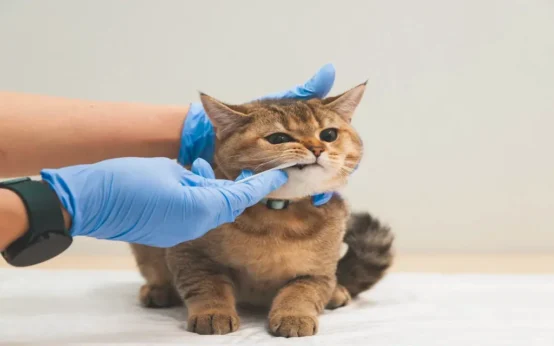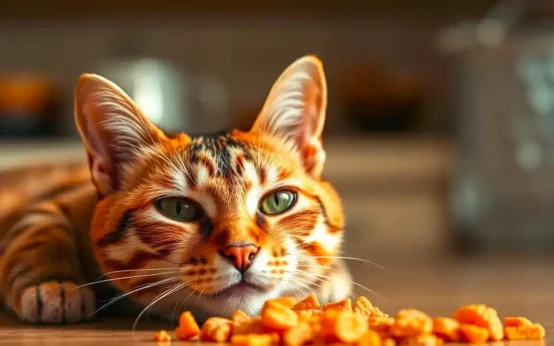How much does it cost to make homemade cat food? The short version, most cats land between about 1.00 and 3.50 per day, depending on your protein choice, supplements, and batch size. An average 10 lb cat eats roughly 4 to 6 oz of finished food per day, with 5 oz as a simple middle number. In this guide, you get a clear cost breakdown by ingredient, one-time tools, and a step-by-step way to price your own recipe.
You will see simple examples with per day and per month totals, plus money-saving tips that do not cut corners on nutrition or safety. If you want a fast answer, jump to the price bands and comparison tables. If you plan to cook this week, the sample recipes and calculator will help you price your exact mix. Homemade can be budget friendly without sacrificing quality when done with a balanced recipe.
Real costs at a glance: per day, week, and month for a typical 10 lb cat
Most budgets rise or fall with two numbers, your finished cost per pound and how many ounces your cat eats each day. For a 10 lb cat that eats about 5 oz per day, the totals below reflect common 2025 prices and three style choices. Budget poultry mixes, mixed proteins, or premium novel meats and fish.
The quick answer: budget, mid-range, and premium price bands
Here is a fast view using 5 oz per day. If your cat is bigger or more active, expect a higher daily total.
| Tier | Per Day | Per Week | Per Month |
|---|---|---|---|
| Budget poultry mix | $1.00–$1.40 | $7–$10 | $30–$42 |
| Mid-range mixed proteins | $1.40–$2.00 | $10–$14 | $42–$60 |
| Premium novel or fish-forward | $2.20–$3.50 | $15–$25 | $66–$105 |
Budget versions often use chicken or turkey, with organs and either DIY supplements or a low-cost premix. Mid-range blends add beef or pork with a premix for convenience. Premium options include rabbit, salmon, or specialty meats.
Homemade vs store-bought price check
Homemade sits between value wet food and premium specialty products. Here is a quick compare on daily cost per cat.
| Store Option | Typical Daily Cost |
|---|---|
| Value canned wet food | $1.50–$2.50 |
| Premium canned or pouched | $3.00–$5.00 |
| Fresh or raw delivery services | $3.00–$6.00 |
| Freeze-dried or air-dried complete food | $4.00–$8.00 |
Takeaway, homemade can beat premium wet and fresh on price, often matches value wet, and usually costs far less than freeze-dried or air-dried. You pay with a little time in the kitchen instead.
What changes your price most
- Protein choice: chicken and pork are cheaper than beef, rabbit, or salmon.
- Supplements: a premix adds cost per batch, DIY costs less but needs precision.
- Batch size: larger batches reduce waste and packaging.
- Equipment choices: boneless meat plus calcium powder avoids a grinder cost.
- Where you shop: warehouse clubs, ethnic markets, and sales lower price.
Ingredient price breakdown and sample recipes you can cost out today
Protein sets the floor. Supplements, eggs, and small add-ons nudge the final number. Below are 2025 US price ranges, then three sample 5 lb finished batches with per day and per month estimates for a 10 lb cat eating 5 oz.
Typical 2025 US prices for meats, organs, and add-ons
- Chicken thighs, bone-in: 1.80 to 2.60 per lb
- Chicken thighs, boneless: 2.50 to 3.50 per lb
- Turkey: 3.00 to 4.00 per lb
- Pork shoulder: 2.80 to 3.80 per lb
- Beef chuck: 4.50 to 6.50 per lb
- Rabbit: 6.50 to 10.00 per lb
- Salmon fillet: 8.00 to 12.00 per lb
Organs:
- Chicken liver: 2.00 to 3.00 per lb
- Hearts or gizzards: 2.50 to 4.00 per lb
Other add-ons:
- Eggs: about 0.20 to 0.35 each
- Sardines in water: 1.20 to 1.80 per 3.75 oz can (use sparingly)
Cats are obligate carnivores, so carbs are usually not needed. Focus on animal protein, organs in proper ratios, and the right supplements.
Supplement costs per batch: premix vs DIY
- Premix for boneless meat and organs: about 8 to 18 per 4 to 6 lb batch, which lands near 0.20 to 0.50 per day for a 10 lb cat.
- DIY core supplements if bought in bulk: taurine, calcium, vitamin E, B-complex, fish oil, iodine. Expect roughly 0.10 to 0.30 per day when portioned correctly.
A premix is easier and lowers the risk of imbalances. DIY can be cheaper but demands precise measuring and a vetted recipe.
Costed sample recipes: chicken budget, turkey/beef mid, rabbit/fish premium
Assume each batch yields 5 lb finished food. One 10 lb cat eating 5 oz per day gets about 16 days per batch.
- Budget chicken, DIY supplements:
- 4 lb boneless thighs at 2.49 = 9.96
- 0.5 lb liver at 2.50 = 1.25
- 0.5 lb hearts/gizzards at 2.80 = 1.40
- 2 eggs = 0.50
- DIY supplement set for batch = 3.00
- Total about 16.11, cost per lb about 3.22, per day about 1.01, per month about 30
- Mid turkey/beef, premix:
- 2.5 lb turkey at 3.49 = 8.73
- 2 lb beef chuck at 5.49 = 10.98
- 0.5 lb liver at 2.80 = 1.40
- Premix 10.00
- Eggs 0.50
- Total about 31.61, cost per lb about 6.32, per day about 1.98, per month about 60
- Premium rabbit/salmon, premix:
- 4 lb rabbit at 7.99 = 31.96
- 0.5 lb salmon at 9.99 = 4.99
- 0.5 lb liver at 3.00 = 1.50
- Premix 12.00
- Total about 50.45, cost per lb about 10.09, per day about 3.15, per month about 95
Here is a quick summary table for the three sample batches.
| Recipe Type | Batch Total | Cost per lb | Cost per Day | Cost per Month |
|---|---|---|---|---|
| Budget chicken DIY | ~$16.11 | ~$3.22 | ~$1.01 | ~$30 |
| Mid turkey/beef premix | ~$31.61 | ~$6.32 | ~$1.98 | ~$60 |
| Premium rabbit/salmon | ~$50.45 | ~$10.09 | ~$3.15 | ~$95 |
Prices vary by store and region, so run your own numbers with the calculator below.
One-time gear and hidden costs to plan for
Your food costs are clear, but real budgets include tools, time, and storage. You can keep startup costs low with boneless cuts and a calcium source. Batch size also matters, larger batches often save money over time.
Equipment and setup costs, amortized per month
Common tools:
- Digital kitchen scale: 15 to 30
- Food processor or grinder: 120 to 300 if grinding bone, 0 if using boneless plus calcium powder
- Storage containers or freezer bags: 10 to 30 to start
- Optional small chest freezer: 150 to 300
Amortization example:
- Spend 200 on gear, spread it over 24 months. That equals about 8 per month, or roughly 0.27 per day. If you feed more than one cat, the per cat cost drops.
Time, packaging, and energy costs you might miss
- Prep time: 60 to 120 minutes per 5 to 10 lb batch. If a 5 lb batch lasts 16 days, valuing time at 15 per hour adds about 0.60 to 1.20 per day, depending on speed and batch size.
- Packaging: 2 to 5 per batch for bags or containers. Larger batches reduce this per day.
- Electricity: freezing and blending adds a small amount, usually 1 to 3 per month.
A simple trick, portion meals in 4 to 6 oz containers and freeze. You cut waste and keep routine simple.
Vet guidance, recipes, and safety costs
- Vet or nutrition consult to review a recipe: about 100 to 300
- Paid, vetted recipes or courses: 10 to 50
- Food safety supplies: gloves, sanitizer, thermometer, about 10 to 25 to start
Good recipes and safe handling help avoid costly vet visits later. That is the real savings.
Your cost calculator: build a budget and save without cutting nutrition
A little math makes planning simple. Price your exact ingredients, include supplements, then convert to per day and per month based on how much your cat eats. Weigh finished portions so your numbers match reality.
A simple formula with a worked example
- Step 1: add total ingredient cost for your batch.
- Step 2: divide by total finished pounds to get cost per pound.
- Step 3: convert to per day, cost per pound multiplied by daily ounces eaten divided by 16.
Example:
- Your batch costs 30 and yields 5 lb.
- Cost per pound is 6.
- If your cat eats 5 oz per day, daily cost is 6 multiplied by 5 divided by 16, about 1.88 per day.
Tip, weigh your cooked or raw finished mix, then portion into daily packs. Your calculator will match what you actually feed.
Smart ways to save money safely
- Buy proteins in bulk and portion right away.
- Favor budget proteins like chicken and pork most of the time.
- Rotate pricier meats for variety, not every day.
- Use a vetted premix when on sale, or buy DIY supplements in bulk if your recipe calls for it. Measure with a milligram scale for accuracy.
- Make larger batches every 2 to 4 weeks to reduce waste and time per meal.
- Choose boneless meat plus calcium powder to skip grinder costs.
- Keep a freezer inventory to avoid spoilage.
Cost mistakes to avoid
- Skipping supplements to save a few dollars. That risks health and bigger vet bills.
- Making tiny batches that raise packaging and time costs.
- Overusing expensive proteins like rabbit or salmon every day.
- Not tracking serving size, which causes overfeeding and higher costs.
- Wasting leftovers by not freezing in meal-sized portions.
Conclusion
So, how much does it cost to make homemade cat food? For one average cat, expect about 1.00 to 3.50 per day, based on protein choice, supplements, and batch size. Homemade can match or beat many store options, especially when you shop sales and batch cook. Use the simple formula, start with a small test batch, and track your real numbers for a month. The goal is complete nutrition at a fair price. Prioritize balanced recipes and safe handling, because a healthy cat is the best return on your effort.
What’s the Real Cost of Homemade Cat Food? FAQ
How much does homemade cat food cost per day?
Most owners spend 1.50 to 3.50 dollars per day per cat. Costs vary by meat type, supplements, and how much your cat eats.
Is homemade cheaper than store-bought?
It can be. Compared to mid-range wet food at 2 to 4 dollars per day, homemade often lands in the same range or a bit lower, especially if you buy in bulk. It usually costs more than dry food.
What are the main cost drivers?
- Protein choice, chicken and turkey are cheaper than rabbit or duck.
- Supplements, taurine, omega-3s, vitamin E, a mineral mix.
- Add-ins, like liver and other organs.
- Equipment, grinder or knives, scale, storage containers.
- Your time, shopping, prep, cleanup.
What do common meats cost?
- Chicken thighs or whole chickens, 1.50 to 3.00 dollars per pound.
- Turkey, 2.00 to 4.00 dollars per pound.
- Pork, 2.50 to 4.50 dollars per pound.
- Beef, 4.00 to 8.00 dollars per pound.
- Rabbit or duck, 6.00 to 12.00 dollars per pound. Prices swing by region and season.
How much do supplements add?
Plan for 0.20 to 0.80 dollars per day per cat. A starter set might cost 30 to 80 dollars, but it lasts many batches. Taurine, fish oil or krill oil, vitamin E, B complex, iodized salt or iodine source, bone meal or calcium, and a general mineral mix are common.
What about organs and bones?
Organs are cheap per pound, often 2.00 to 4.00 dollars, and you use small amounts. If you do not feed edible bones, budget for calcium or bone meal, around 10 to 20 dollars that lasts months.
Do I need a grinder and how much is it?
Not always. If you feed boneless with calcium powder, you can skip it. A capable meat and bone grinder runs 150 to 400 dollars. Spread over a year, that might add 0.15 to 0.50 dollars per day for one cat, less for multiple cats.
How much does a batch cost to make?
For a 10-pound batch of chicken-based food:
- Meat and organs, 20 to 30 dollars.
- Supplements, 5 to 10 dollars.
- Packaging, 2 to 5 dollars. Total, roughly 27 to 45 dollars, which is about 2.70 to 4.50 dollars per pound.
What is the cost per pound compared to canned food?
Homemade chicken mixes often land at 2.50 to 4.50 dollars per pound. Many mid-range canned foods cost 3.50 to 6.00 dollars per pound equivalent. Premium cans can be higher.
Does raw or cooked change the price?
Usually similar. Raw may skip cooking fuel, but you might spend more on a grinder if you include bones. Cooked boneless recipes use calcium powder, which is cheap per batch.
How does buying in bulk affect cost?
Buying family packs, whole birds, or case lots can cut meat cost by 10 to 30 percent. Freezer space helps. Watch sales around holidays for turkey and roasts.
What hidden costs should I expect?
- Freezer bags or containers, 5 to 15 dollars per month.
- Extra fridge or freezer use, a few dollars per month in power.
- Occasional waste if a batch is not sealed well.
- Your time, often 1 to 3 hours per batch.
What about vet and nutrition consults?
A one-time check with a vet or nutritionist can cost 75 to 200 dollars. If you want a custom recipe, plan for 150 to 400 dollars. Spread over a year, that adds a small daily cost but helps avoid nutrient gaps.
How much does it cost to feed a kitten or a big cat?
Kittens and large cats eat more per pound of body weight. Expect 2.00 to 5.00 dollars per day for fast-growing kittens or big breeds, especially if using pricier meats.
Is homemade worth it for multiple cats?
Often yes. Bulk buying and shared supplements drop the per-cat cost. Your time per meal stays about the same.
How can I lower the cost without cutting quality?
- Use chicken thighs or whole chickens, then add organs and supplements.
- Buy in bulk, portion, and freeze.
- Use seasonal sales.
- Compare calcium powder to grinding bones.
- Keep your recipe balanced so you do not face health costs later.
What’s a simple monthly budget for one adult cat?
- Meat and organs, 45 to 90 dollars.
- Supplements, 6 to 20 dollars.
- Packaging and power, 5 to 15 dollars. Total, about 56 to 125 dollars per month, based on meat choice and appetite.
Any cost red flags?
If a recipe skips taurine or calcium, or uses only muscle meat, you may save now but risk higher vet bills later. Balance first, then price.
You May Also Like:




 Dog Trick Training for Beginners
Dog Trick Training for Beginners  Gingivitis Cats Symptoms Every Pet Parent Should Know
Gingivitis Cats Symptoms Every Pet Parent Should Know  How to Make Dog Cookies at Home
How to Make Dog Cookies at Home  Wet Food or Dry Food for Cats?
Wet Food or Dry Food for Cats?  What Is the Healthiest Hamster Breed for Your Home?
What Is the Healthiest Hamster Breed for Your Home?  Cat Food Intolerance Symptoms: How To Spot Them Early
Cat Food Intolerance Symptoms: How To Spot Them Early